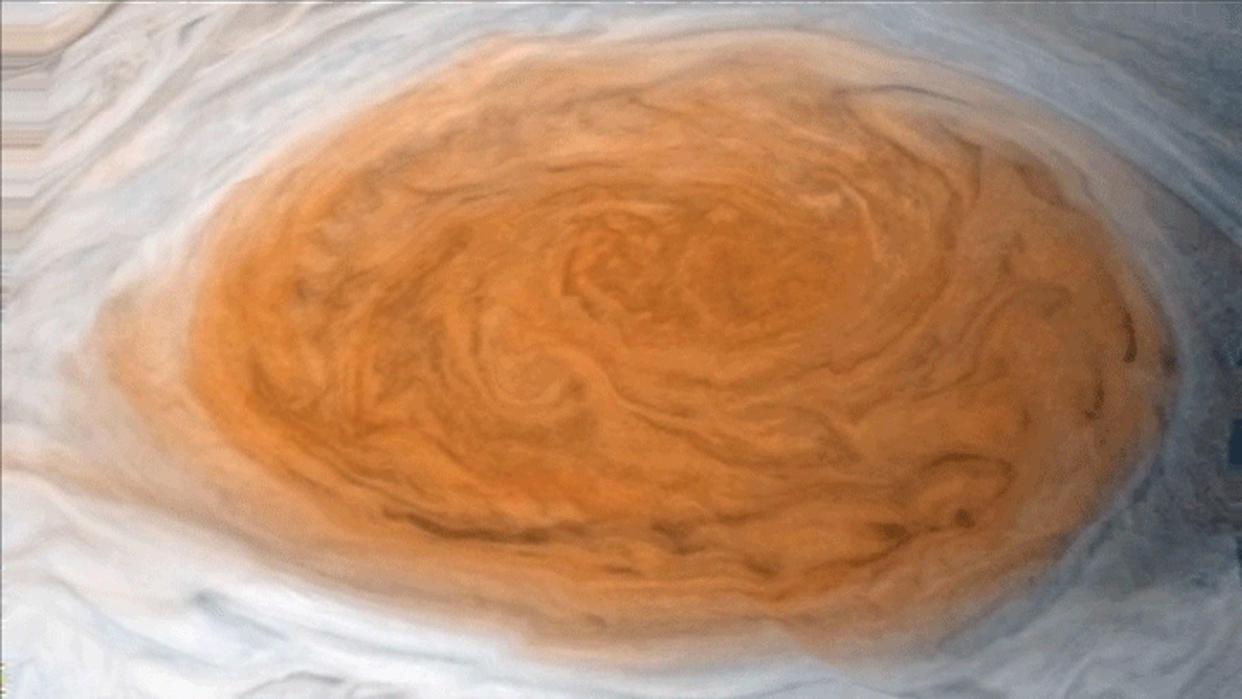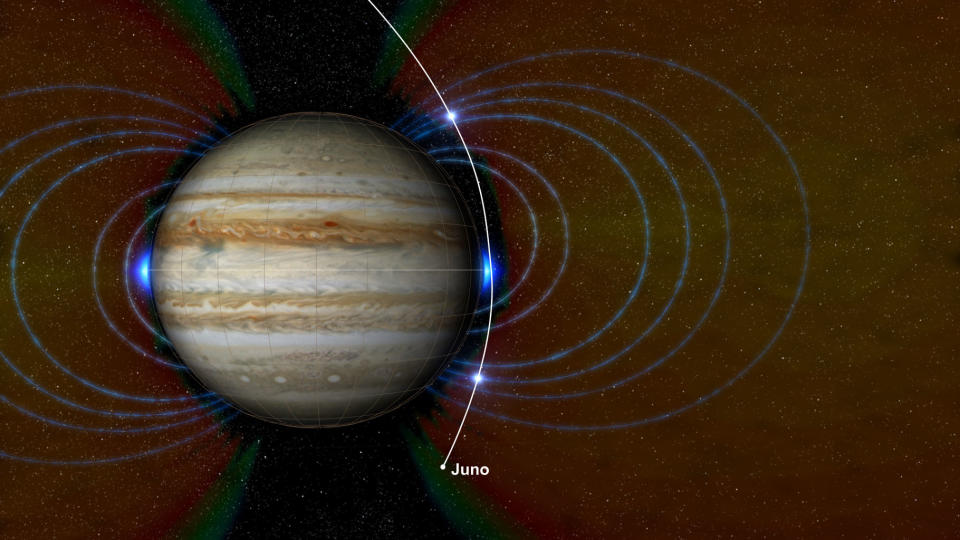Jupiter's Great Red Spot Deeper Than Earth Oceans

Jupiter's Great Red Spot is one of the solar system's great wonders, a centuries-old storm that is larger than the entire Earth. NASA's Juno spacecraft has been studying the Great Red Spot since July 2017, a part of its mission to learn how largest planet in the solar system formed. The spacecraft has shown us that the enormous storm is deeper than expected and that Jupiter's atmosphere is even more complex than anticipated.
"One of the most basic questions about Jupiter's Great Red Spot is: how deep are the roots?" said Scott Bolton, Juno's principal investigator, in a press release. "Juno data indicate that the solar system's most famous storm is almost one-and-a-half Earths wide, and has roots that penetrate about 200 miles (300 kilometers) into the planet's atmosphere."
Scientists already knew that the Great Red Spot was 10,000 miles (16,000 kilometers) in width, about 1.3 times as wide as Earth. But the new study shows that in terms of depth, "the Great Red Spot's roots go 50 to 100 times deeper than Earth's oceans and are warmer at the base than they are at the top," said Andy Ingersoll, a Juno co-investigator.
The structure helps explain the the Great Red Spot's amazing speeds, which can hit between 270 to 425 miles per hour (430 to 680 kilometers per hour). "Winds are associated with differences in temperature, and the warmth of the spot's base explains the ferocious winds we see at the top of the atmosphere," says Ingersoll.

Juno's Microwave Radiometer (MWR) made the discovery. The MWR actually is six separate radiometers, and each radiometer has its own antenna to measure Jupiter's thermal radiation beneath the clouds. Each radiometer is assigned a different wavelength and a different region of Jupiter's vast atmosphere. Even so, observations were hindered a little by the discovery of additional radiation zone at Jupiter.
"The closer you get to Jupiter, the weirder it gets," said Heidi Becker, Juno's radiation monitoring investigator at JPL. "We knew the radiation would probably surprise us, but we didn't think we'd find a new radiation zone that close to the planet. We only found it because Juno's unique orbit around Jupiter allows it to get really close to the cloud tops during science collection flybys, and we literally flew through it."
The previously uncharted radiation zone was detected by the Jupiter Energetic Particle Detector Instrument. JEDI consists of three self-contained sensors that focus on Jupiter's polar space environment. The instrument discovered particles of gas close to the planet that were created around the Jovian moons Io and Europa. The material contained hydrogen, oxygen and sulfur ions moving at almost light speed.
The largest planet in the solar system has always been something of an enigma, clouded in seemingly endless gas and overwhelming in its sheer size. Juno's discoveries continue to show us that Jupiter has many mysteries to solve yet. The Juno spacecraft's ninth scientific pass of the planet will take place later this month, on December 16.
Source: JPL
You Might Also Like

